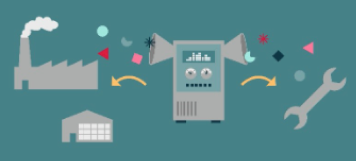Inductive method
This involves collecting raw, unfiltered data. The data can then be analysed as required. The disadvantage of this method is that it calls for considerable storage capacity, which generates higher costs.
This practical guide gives you an overview of the concepts you need to know and the elements you need to take into account if you are planning to share your data as an SME.
It will also help you choose one of the Template Agreements offered on this platform.
Data is a digital representation of acts, facts or information. It may take the form of audio, visual or audiovisual recordings
Industrial or non-personal data refers to all data that is not personal data.
Examples : last names, first names, addresses, photos, voice recordings, OASI numbers, email addresses, IP addresses, login information
doesn’t contain any elements relating to an identified or identifiable person.
Examples : master data or reference data, metadata, monitoring data, transaction data.
Non-personal data that contains personal data must be anonymised beforehand, i.e. any elements relating to an identified or identifiable person must be removed.
Every company produces data in its operations. This data is information relating to its activities, grouped together in different types of files and formats.
To determine whether your data is useful to others, ask yourself the following questions:
Industrial data must undergo several stages of processing before it can be analysed and interpreted to derive information.
All of these steps help you to leverage your database and make it more attractive to potential users.
Data can be entered manually, copied by exporting a source or extracted from an online solution using online retrieval tools (platforms, SaaS) according to two methods:
The data is stored in software, live, in the cloud or on a network.
The data is structured in a format compatible with the planned analyses (tables, rows, columns) using software or a database engine.
This step includes data cleanup (removing errors and duplicates), standardisation, harmonisation and formatting.
This involves ensuring the quality and accuracy of the data.
This involves collecting raw, unfiltered data. The data can then be analysed as required. The disadvantage of this method is that it calls for considerable storage capacity, which generates higher costs.
With this method, data is collected for a specific purpose. It’s necessary to identify the starting point and formulate a working hypothesis so that the required data can be ‘filtered’. This method, which is less costly, is the most relevant for SMEs.
There are currently no applicable standard fees. The Template Agreements leave it up to the parties to decide if the making available of data is to be free of charge or subject to a fee, and how much the fee will be. The fee should take into account your costs for making the data available (storage, training or processing fees), plus a potential profit margin.
Another valuation method is based on the potential revenue resulting from the use of the data, for example setting a fee that is a certain percentage of the revenue generated from the use of the data (similar to the licensing of intellectual property rights).
Regardless of the method chosen, the fee paid could be correlated to the scope of the rights granted to the recipient (for example, exclusive rights), the benefit derived by the recipient, the contractual commitments made by the supplier in terms of data quality and accuracy, the rarity and volume of the data, and the duration and frequency of the supply.
This requires identifying the use cases for your data or, failing that, identifying the players in your value chain who would be interested in using the data. This makes it easier to organise the sharing as more of a complementary activity rather than a competitive one.
an SME collects data on its production machines and uses it to increase efficiency. It can also share the data with…
the seller
for it to be able to make improvements to the machines

the maintenance provider
for it to better understand the source of the problems and offer more effective services.
In Switzerland, there’s no specific regulation on the sharing of industrial data, but internationally, the regulatory framework is changing, particularly with the European Union’s Data Act, which could also impact Switzerland. The Template Agreements offered on this plateform already take some of the provisions of the Data Act into account (technical standards, usage restrictions).
Certain provisions in Swiss law are also likely to apply (copyright and software protection, protection of trade secrets, the law on unfair competition, etc.). It’s also necessary to include a warranty system and, where appropriate, a confidentiality obligation.
The volume of industrial data is constantly increasing due to the rise of connected products. This data generates knowledge and profit. By sharing such data, companies foster innovation, strengthen their competitiveness on the market, reduce their costs and increase their productivity, not to mention the many other benefits. It’s important that more small and medium-sized businesses (SMEs) harness this essential resource of the digital economy.
To date, Switzerland does not have specific legislation governing industrial data. Instead, its protection relies on a patchwork of rules from various areas, such as trade secrets, unfair competition, and sector-specific regulations. In this context, the best approach is to set up a clear framework for data sharing through a contract. However, drafting such agreements can be complex.
This platform makes the process easier by offering standardized Template Agreements that are easy-to-use and customizable within the limits of applicable law.
There are three data sharing models and therefore three types of Template Agreements :
Different criteria to consider:
The Template Agreements all have the same structure: they include a cover sheet, a list of definitions, a set of contractual clauses and a signature page. The different options are shown in square brackets. For each model, we offer a commented version that provides specific information and a non-commented version.